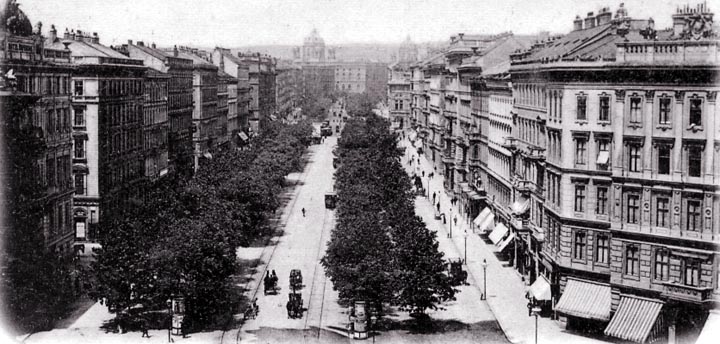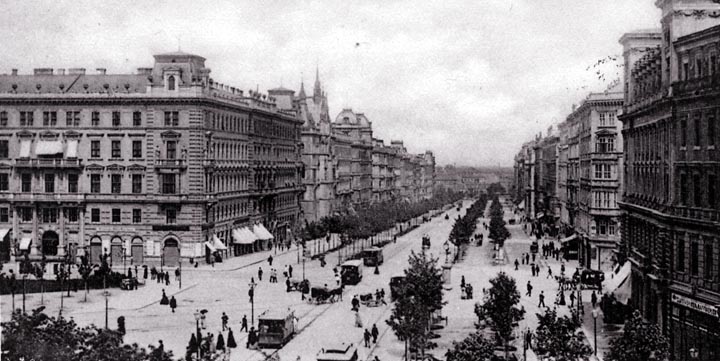
In the late 19th Century, a ring boulevard was built around the old core of Vienna. Camillo Sitte, who was Viennese, wrote his City Planning According to Artistic Principles largely because he believed that the new city planning in Vienna was of a markedly inferior quality compared to the older parts. He analyzed the old sections in an effort to discover why they make such wonderful urban spaces. Today, almost any city would be delighted to possess this beautiful boulevard, but Sitte would have considered it a blot on the city. While I would not go as far as Sitte in this matter, I think that he is in principle correct. In the coming chapters, we will be looking at how the narrow streets characteristic of medieval areas make such fine urban spaces. In its execution, this is a nearly perfect boulevard. It has the trees, the multiple roadways, and the proportions of a true boulevard. It differs, however, in one important aspect. Because the boulevard was thrown around the existing core of the city, it either had to be continuously curved or a series of straight segments. The use of straight segments gives the enclosure that is missing from very long straight streets. Each of the ring segments is closed at both ends by the next segment angling off. Notice that the blocks are quite short, and that just a few buildings form the face of an entire block. Notice also that the buildings are in harmony with each other. The use of awnings is a lovely and practical touch that adds life to the street as they are furled and unfurled with the changing light and weather.
|
 Next City Design Home
E-mail |